
Concept explainers
(a)
Interpretation:
The number of signals that would be generated in the
Concept introduction:
In a
Answer to Problem 16.20P
The number of signals with their splitting patterns in the given molecule is indicated as
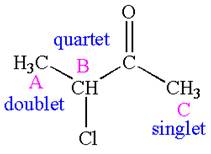
Explanation of Solution
The structure of the given compound is
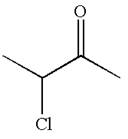
The compound has three chemically distinct protons indicated as
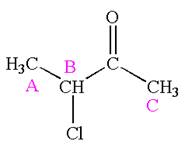
The protons
Splitting of each type of proton is shown below:
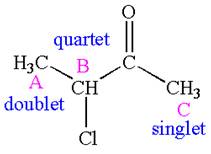
The splitting pattern for each type of proton signal in the given molecule is determined based on their respective number of neighboring protons.
(b)
Interpretation:
The number of signals that would be generated in the
Concept introduction:
In a
Answer to Problem 16.20P
The number of signals with their splitting patterns in the given molecule is indicated as
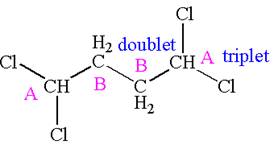
Explanation of Solution
The structure of the given compound is
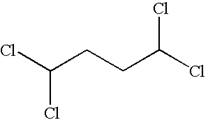
The compound has two chemically distinct protons indicated as
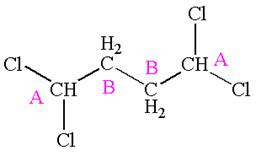
Protons
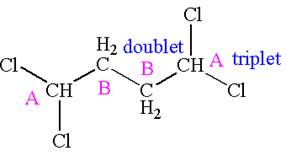
The splitting pattern for each type of proton signal in the given molecule is determined based on their respective number of neighboring protons.
(c)
Interpretation:
The number of signals that would be generated in the
Concept introduction:
In a
Answer to Problem 16.20P
The number of signals with their splitting patterns in the given molecule is indicated as
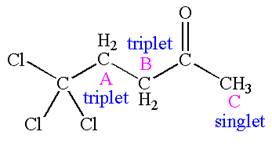
Explanation of Solution
The structure of the given compound is
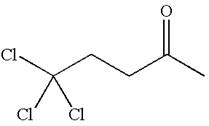
The compound has three chemically distinct protons indicated as
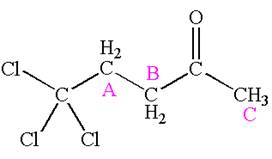
Protons

The splitting pattern for each type of proton signal in the given molecule is determined based on their respective number of neighboring protons.
(d)
Interpretation:
The number of signals that would be generated in the
Concept introduction:
In a
Answer to Problem 16.20P
The number of signals with their splitting patterns in the given molecule is indicated as
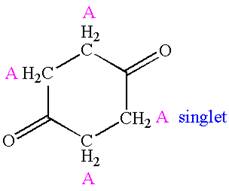
Explanation of Solution
The structure of the given compound is
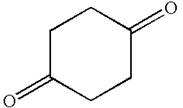
The compound has only one type of protons indicated, so there must be only one signal in
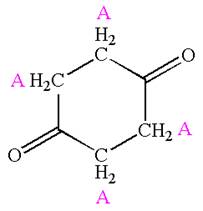
As all protons are chemically equivalent, they do not couple with each other’s signal and appear as singlet.

The splitting pattern for proton signal in the given molecule is determined based on their respective number of neighboring protons.
Want to see more full solutions like this?
Chapter 16 Solutions
EBK ORGANIC CHEMISTRY: PRINCIPLES AND M
- What is the name of the following compound? SiMe3arrow_forwardK Draw the starting structure that would lead to the major product shown under the provided conditions. Drawing 1. NaNH2 2. PhCH2Br 4 57°F Sunny Q Searcharrow_forward7 Draw the starting alkyl bromide that would produce this alkyne under these conditions. F Drawing 1. NaNH2, A 2. H3O+ £ 4 Temps to rise Tomorrow Q Search H2arrow_forward
 Organic Chemistry: A Guided InquiryChemistryISBN:9780618974122Author:Andrei StraumanisPublisher:Cengage Learning
Organic Chemistry: A Guided InquiryChemistryISBN:9780618974122Author:Andrei StraumanisPublisher:Cengage Learning Organic ChemistryChemistryISBN:9781305580350Author:William H. Brown, Brent L. Iverson, Eric Anslyn, Christopher S. FootePublisher:Cengage Learning
Organic ChemistryChemistryISBN:9781305580350Author:William H. Brown, Brent L. Iverson, Eric Anslyn, Christopher S. FootePublisher:Cengage Learning

